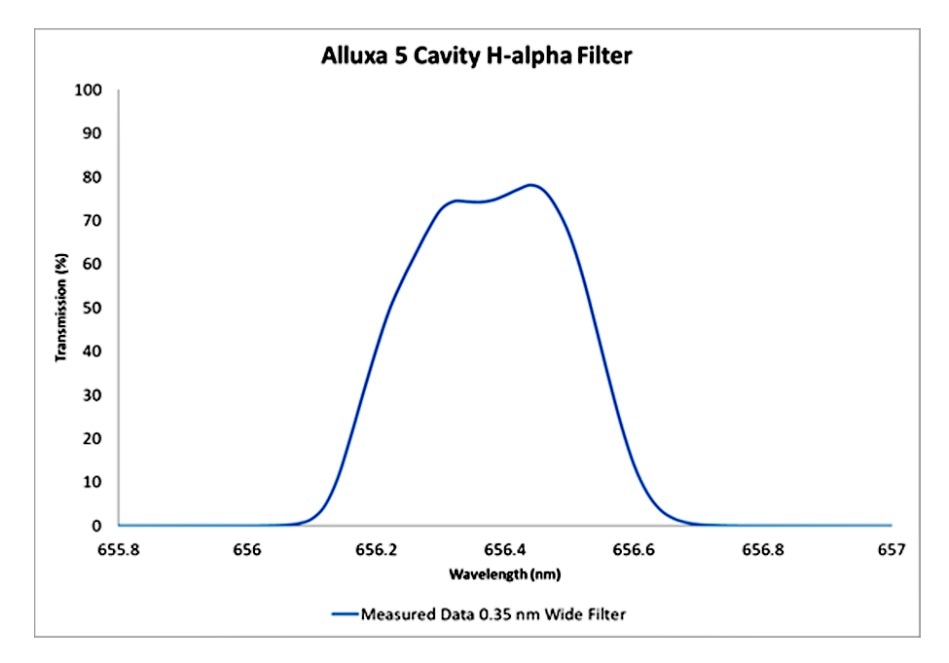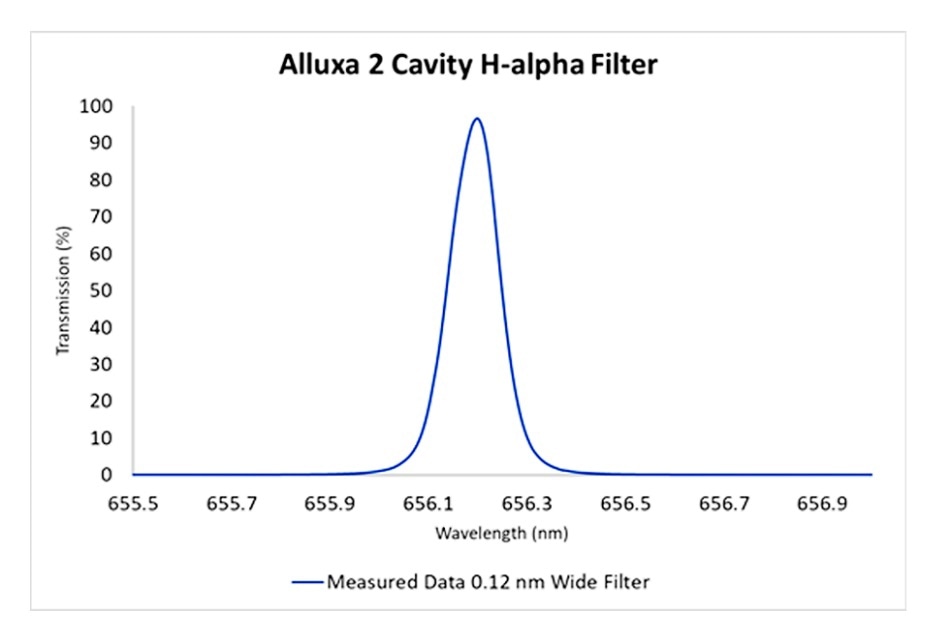a global leader in high-performance optical coatings, filters, and thin-film deposition technologies, announces the development of two groundbreaking Hydrogen Alpha (H-alpha) Emission Line Filters for astronomy applications. Though these new filters have been specifically tailored to monitor H-alpha spectra in astronomy, they can also be used in any application where spectral line discrimination is critical, including spectroscopy, plasma monitoring, fusion research, and more.
The novel 5 Cavity H-alpha Filter sets a new standard for narrow filters with regard to squareness. It has a 50% BW of only 0.35 nm, a 1% BW of <0.6 nm, and a peak transmission of approximately 80% and is fully blocked to OD6 out of band (see graph below):

Alluxa’s 2 Cavity H-alpha Filter features an even narrower design with a FWHM of 0.12 nm and peak transmission of greater than 90%, as shown in the graph below:

Chief Commercial Officer Peter Egerton notes,
We are delighted to announce this innovation in ultra-narrow optical filters technology. Our engineering team has worked diligently on these breakthrough emission line filters, and we look forward to showcasing them at the upcoming SPIE Astronomical Telescopes + Instrumentation 2022 exhibition in Montreal.”
The company will premiere both H-alpha emission line filters at SPIE’s Astronomical Telescopes + Instrumentation Exhibition, Montreal, Quebec, July 19 – 21, 2022 in booth #405.
For more information about Alluxa’s new line of Hydrogen Alpha (H-alpha) Emission Line Filters for astronomy, please visit: www.alluxa.com.
About Alluxa
Alluxa (www.alluxa.com – Santa Rosa, CA) designs and manufactures next generation, hard-coated optical filters using a proprietary plasma deposition process. The company’s unique, purpose-built deposition platform and control systems were designed, developed, and built by our team to address the demanding requirements of the next generation of systems and instruments. Our objectives are to increase production capability and continue to provide > 99% on-time delivery while creating the world’s most challenging filters at breakthrough price points.